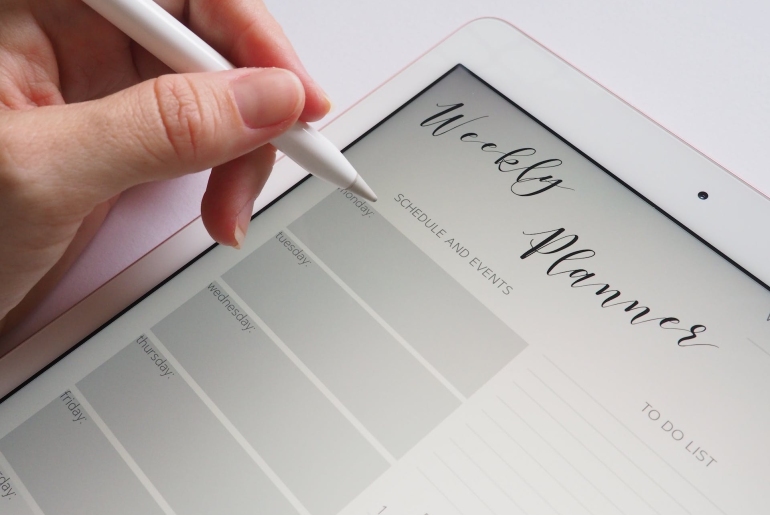This article may contain references to products or services from one or more of our advertisers or partners. We may receive compensation when you click on links to those products or services. Nonetheless, our opinions are our own.

Updated by Albert Fang
Blogging has become a popular way for businesses to establish themselves as thought leaders in their industry. A business blog can help to improve SEO, increase web visibility, and differentiate your brand from competitors. But, where do you start? In this ultimate guide, we will cover everything you need to know about creating a successful business blog. From understanding the importance of a business blog to setting up your blog and curating content, we have got you covered. We will also delve into the art of crafting a compelling blog post and share best practices for maintaining a great business blog. Lastly, we will discuss how to promote your blog and build an audience by effectively sharing and promoting your blog posts. Whether you are just starting out or looking to improve an existing business blog, this guide is for you!
Understanding the Importance of a Business Blog
Showcasing industry expertise and knowledge, a business blog serves as a powerful tool for establishing authority and trust within the industry. Consistent blog posts not only drive increased website traffic and visibility but also provide an effective means of engaging with the target audience. Integrating a business blog into the content marketing strategy is essential for the overall digital marketing plan. Embracing a successful business blog involves generating new content around topic ideas and keyword phrases, which is a great way to differentiate from competitors in the online space. To end of the day, a good business blog, when optimized with best practices and devoid of large blocks of text, goes a long way in establishing a company’s online presence and presenting valuable information.
Establishing Credibility in Your Industry
Consistently delivering valuable content is pivotal in building credibility within your industry. By sharing insightful industry knowledge, you enhance your authority and trustworthiness. Addressing industry-specific topics further reinforces your expertise, while establishing connections with industry experts adds an extra layer of credibility. Your commitment to providing consistent and helpful information solidifies your position as a credible source in the industry. Embracing these practices is the best way to establish and reinforce credibility within your niche, ultimately contributing to the success of your business blog and enhancing your digital marketing efforts.
Improving SEO and Web Visibility
Targeting relevant keywords is crucial for enhancing visibility on search engines and attracting organic traffic. Optimizing blog posts by incorporating specific keyword phrases can significantly improve the potential for organic traffic. It’s important to create valuable content that aligns with search intent, as this can lead to better search engine results. By addressing topics relevant to the target audience and providing enough information, the visibility and ranking of the business blog can be improved. At the end of the day, ensuring that the content is in line with the best practices for a successful business blog will go a long way in improving SEO and web visibility.
Differentiating Yourself from Competitors
When it comes to differentiating your blog from competitors, offering unique angles on industry topics can set it apart. Addressing industry challenges in new ways and sharing interesting facts and insights can also add that much-needed uniqueness. Additionally, providing expert opinions, insights, and information that competitors don’t offer can really help your blog stand out. By incorporating these strategies into your content, you can ensure that your blog takes the lead in offering a fresh perspective and valuable insights within your industry.
Getting Started: Setting Up Your Blog
Setting up your blog begins with choosing a relevant domain name that reflects your business. The right platform is crucial for optimizing the user experience, while identifying your target audience will guide your content strategy. Incorporating relevant keywords early on is essential for improved search engine results, and a content calendar ensures consistent and valuable content creation, helping you in creating a successful business blog.
Choosing the Right Platform for Your Business Blog
When choosing the right platform for your business blog, prioritizing a user-friendly interface and management system is essential. Mobile accessibility should not be overlooked, as it directly impacts the reach of your blog. Integration with social networks is necessary for effective content promotion, and support for your content marketing strategy is vital for success. Additionally, utilizing a keyword research tool can aid in seamlessly integrating relevant keywords into your content.
Identifying Your Target Audience
Understanding the target audience is the first step to a successful business blog. Market research provides insights into their specific needs and search intent, guiding the content strategy. Identifying the right keywords tailored to the audience is crucial for higher visibility in Google search results. Adapting the content calendar to their preferences ensures the delivery of valuable content. Tailoring the content to address the different things that matter to your audience is the best way to establish credibility and improve the blog’s SEO. Addressing these aspects will go a long way in creating a successful business blog.
Curating Content: What to Write About?
To curate engaging content for your business blog, it’s essential to keep your target audience’s interests in mind. Directly address their needs and pain points through your blog posts, ensuring they find value in what you write. Utilize keyword research to generate relevant topics and identify specific areas of interest for your audience. Find unique angles to present industry topics effectively and capture their attention.
Keeping Your Target Audience in Mind
When crafting blog content, it’s essential to address the pain points of your target audience. Tailoring the content to meet their needs and interests and including specific topics that directly appeal to them is crucial. Ensuring that the blog content resonates with their preferences will lead to a successful business blog. Adapting the content calendar to align with their interests is also a key consideration. By understanding and meeting the needs of your target audience, your blog will stand out, and you’ll find yourself on Google search results.
Directly Addressing Customer Needs
Directly addressing customer needs involves offering valuable information to solve customer challenges and addressing industry-specific topics that cater to their needs. Providing unique solutions to common industry problems and presenting industry insights that directly benefit customers are essential. By satisfying the search intent effectively, a business blog can build credibility and appeal to its target audience. Understanding the importance of directly addressing customer needs is crucial in creating successful business blog posts. Utilizing SEO tools for topic generation and identifying specific topics relevant to the target audience are key factors in achieving this goal.
Utilizing SEO Tools for Topic Generation
When generating topic ideas for a successful business blog, using SEO tools such as keyword research tools and google search can greatly help in finding valuable content topics. Analyzing search intent is crucial as it aids in generating relevant content ideas that align with the target audience’s preferences. Understanding the target audience is the first step towards effective topic generation, followed by identifying specific topics based on market research. Finding unique angles for content topics not only sets your business blog posts apart but also improves organic traffic, making it a great way to kick start your own blog.
Crafting a Compelling Blog Post
Crafting a compelling blog post involves including relevant keywords to enhance visibility in search results and focusing on user experience to meet the audience’s needs. Incorporating engaging visuals creates a visually appealing post, while structuring content around the right keywords improves search engine performance. Ensuring the content addresses the target audience’s search intent increases organic traffic. By paying attention to these details, a business blog can increase its visibility, engage with the audience effectively, and establish itself as a valuable source of information within the industry.
The Art of an Enticing Title
Crafting impactful titles with pertinent keywords significantly enhances the visibility of a business blog post in google search results. By integrating thorough keyword research into the title creation process, a blog can maximize its potential for organic traffic. Using unique and innovative title ideas not only distinguishes the blog post in search results but also captures the attention of the target audience. Optimizing titles to align with search intent is crucial for ensuring that the blog post reaches the right audience. Ultimately, creating compelling titles based on valuable content topics plays a pivotal role in enhancing the overall visibility and success of a business blog.
Maintaining a Consistent and Appealing Tone
When crafting blog posts, establishing a consistent tone across all articles is crucial for strengthening the blog’s brand identity. Adapting the tone to align with the preferences of the target audience can significantly enhance overall engagement and user experience. Furthermore, conveying the brand’s personality through the post’s tone fosters a deeper connection with the audience and promotes reader loyalty. Additionally, ensuring that the tone resonates with the blog’s niche helps maintain and strengthen reader interest over time. By carefully maintaining a consistent and appealing tone throughout the blog, you can ensure that your content not only resonates with your audience but also sets the tone for a successful business blog.
Incorporating Engaging Visuals
Enhancing user experience in a business blog post involves incorporating engaging visuals. By adding relevant visuals that complement the content, post engagement significantly improves. Infographics are a great addition, presenting complex information in a visually appealing way. High-quality images also play a crucial role, increasing the overall visual appeal of the blog post. Selecting visuals that resonate with the target audience is key to boosting engagement, ultimately contributing to a successful business blog.
Presenting Unique Ideas
Incorporating new, valuable content ideas sets the blog post apart from the competition. Unique angles on industry topics capture the audience’s interest and enrich the blog’s content calendar. Infusing the content with fresh, relevant keywords expands the blog’s reach and fosters audience engagement. Introducing innovative concepts in blog topics is a great way to keep the blog post engaging for the readers. Sharing unique perspectives on specific topics adds depth and value to the company blog.
Best Practices for a Great Business Blog
Crafting a successful business blog involves several key strategies. Implementing a content calendar ensures consistent and valuable content production, essential for maintaining reader engagement and attracting new visitors. Engaging with readers through comments and social media interaction fosters a sense of community and encourages ongoing dialogue. Making blog posts scannable with subheadings and bullet points enhances readability and allows readers to grasp the main points at a glance. Furthermore, integrating the right keywords in the domain name is a great way to improve the blog’s search engine visibility and increase its chances of ranking well on Google search results. Additionally, integrating social networks into the blog strategy is a best practice for expanding the blog post’s reach and capturing a wider audience.
The Importance of a Content Calendar
Maintaining a consistent publishing schedule becomes easier with a content calendar, as it streamlines the planning and organization of blog posts. By scheduling posts based on keyword research, you can optimize the blog’s search engine performance, ultimately increasing its visibility on Google search. Additionally, aligning blog topics with the interests of the target audience becomes more achievable with the use of a content calendar. This ensures that the blog offers a diverse range of topics, keeping the content fresh and engaging for readers. Incorporating topic ideas into the calendar is the best way to create a successful business blog with a steady flow of new content.
Engaging with Your Readers
Cultivating a sense of community around the blog can be achieved by responding to comments and feedback. Encouraging reader participation through polls and surveys is a great way to enhance blog engagement. Sparking discussions and interactions by sharing blog posts on social media platforms is essential. Fostering audience loyalty can be achieved by acknowledging reader contributions in blog posts. Additionally, enriching the blog’s content experience by interacting with readers through live Q&A sessions is a valuable way to engage with the audience.
Making Your Blog Easily Scannable
Enhancing your blog’s readability can be achieved by utilizing subheadings and bullet points. Clear, concise sections make your content easily scannable. Descriptive headings and subheadings aid in navigation within your blog post, ensuring a seamless reading experience. Visual cues, like icons, draw attention to the key points, enhancing the overall visual appeal. Additionally, formatting your content with short paragraphs improves scanning for your audience, making it easier for them to grasp the main points at a glance. Implementing these techniques will not only enhance your blog’s readability but also contribute to a more engaging and interactive user experience.
Promoting Your Blog and Building an Audience
Promoting your blog and building an audience involves sharing blog posts across social media platforms to increase visibility. Collaborating with industry influencers is a great way to reach a larger audience, while utilizing email marketing can promote new blog content directly to subscribers. Engaging with the audience by responding to comments and messages fosters a strong connection, and guest posting on other relevant blogs is a good way to attract new readers. Each of these strategies plays a crucial role in promoting your blog and growing a dedicated readership, helping to establish a successful business blog in the digital marketing landscape.
To effectively share and promote your blog posts, expand their reach by using relevant hashtags on social media. Repurpose your content into visually appealing infographics for sharing. Schedule social media posts at optimal times to engage your audience. Add social sharing buttons to encourage readers to share your posts. Utilize LinkedIn to share with a professional audience.
Conclusion
In conclusion, having a well-crafted business blog can bring numerous benefits to your brand. It helps establish your credibility in the industry, boosts your SEO rankings, and sets you apart from competitors. When setting up your blog, choose the right platform and identify your target audience to tailor your content accordingly. Curate content that addresses customer needs and utilizes SEO tools for topic generation.
Crafting compelling blog posts involves creating enticing titles, maintaining a consistent and appealing tone, incorporating engaging visuals, and presenting unique ideas. Follow best practices such as using a content calendar, engaging with your readers, and making your blog easily scannable.
Lastly, don’t forget to promote your blog and build an audience. Effectively share and promote your blog posts through social media, email marketing, and collaborations with influencers. With dedication and strategic planning, your business blog can become a valuable asset for your brand’s growth and success.

Reviewed and edited by Albert Fang.
See a typo or want to suggest an edit/revision to the content? Use the contact us form to provide feedback.
At FangWallet, we value editorial integrity and open collaboration in curating quality content for readers to enjoy. Much appreciated for the assist.
Did you like our article and find it insightful? We encourage sharing the article link with family and friends to benefit as well - better yet, sharing on social media. Thank you for the support! 🍉
Article Title: How to Write a Business Blog: The Ultimate Guide
https://fangwallet.com/2023/11/28/how-to-write-a-business-blog-the-ultimate-guide/The FangWallet Promise
FangWallet is an editorially independent resource - founded on breaking down challenging financial concepts for anyone to understand since 2014. While we adhere to editorial integrity, note that this post may contain references to products from our partners.
The FangWallet promise is always to have your best interest in mind and be transparent and honest about the financial picture.
Become an Insider

Subscribe to get a free daily budget planner printable to help get your money on track!
Make passive money the right way. No spam.
Editorial Disclaimer: The editorial content on this page is not provided by any of the companies mentioned. The opinions expressed here are the author's alone.
The content of this website is for informational purposes only and does not represent investment advice, or an offer or solicitation to buy or sell any security, investment, or product. Investors are encouraged to do their own due diligence, and, if necessary, consult professional advising before making any investment decisions. Investing involves a high degree of risk, and financial losses may occur including the potential loss of principal.
Source Citation References:
+ Inspo











































